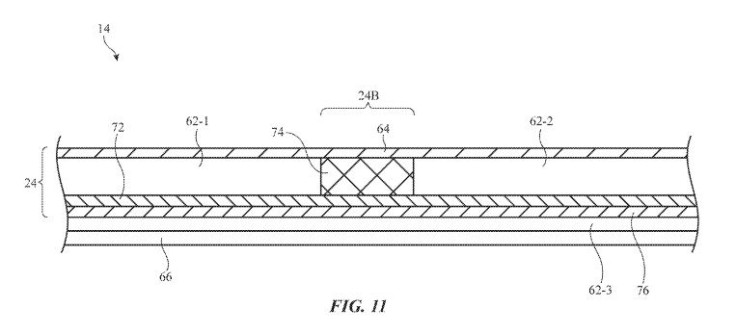Apple’s Future iPhones Could Feature Self-Healing Display
KEY POINTS
- Apple is working on a slew of new technologies for upcoming devices
- One such technology is a "self-healing" display
- The technology might be used for future iPhones
A new patent application shows that Apple is hard at work in creating functional and durable flexible displays that will be used for its future devices, such as a foldable iPhone. The technology described in the new filing reveals that the company is working on a display that's capable of “healing” itself from the damages it might sustain during normal use.
The new patent application, titled “Electronic Devices With Flexible Display Cover Layers,” was recently published by the U.S. Patent and Trademark Office. In it, inventors talked about one of the ways that Apple could make a foldable iPhone.
The inventors described a device that has a flexible display comprised of several parts, including two rigid display cover layers that are joined together by a flexible display cover layer in the middle. The flexible part allows the device to be bent in the same way today's foldable smartphones are folded.
What's interesting about the patent application is the inventors' repeated mention of a layer made of material that possesses “self healing” properties. They said this layer “may be formed across the entire display cover layer or may be formed only in the flexible region of the display cover layer.”

The inventors said that the layer can be made of elastomer, which is stretchable and can possess the ability to return to its original shape. This ability is what the inventors could refer to as the “self-healing” properties.
The patent application noted that the elastomer layer can initiate self-healing with the help of external factors, such as ”externally applied heat, light, electric current, or other type of external stimulus.” The patent indicated that the electronic device might be able to apply such heat to the self-healing layer via the use of a “heating layer” included in the display cover assembly.
This heating layer, the patent application stated, can generate heat to activate the display's self-healing properties in various circumstances: in response to a user's taps and swipes on the screen, when the device is plugged in and charging or when it is scheduled to do so.
This new kind of technology will help touchscreen devices, flexible or rigid, to recover from scratches brought about by daily wear and tear. The inventors noted that it could be used across a slew of electronic device types, including laptop computers, phones, wrist-watch devices, pendant devices and so on.
© Copyright IBTimes 2024. All rights reserved.





















